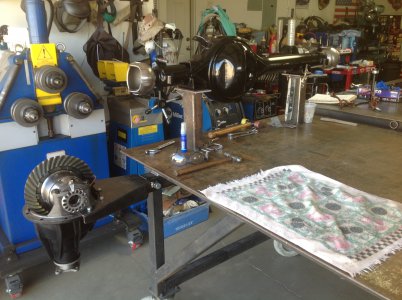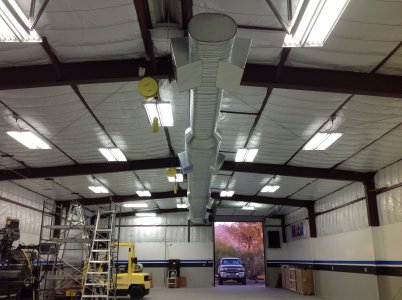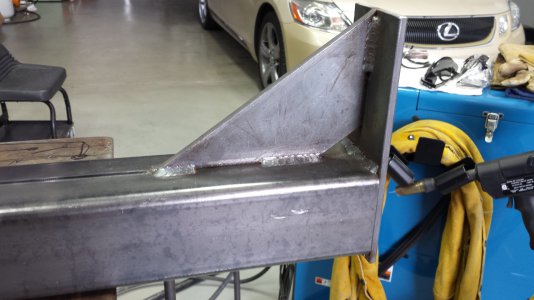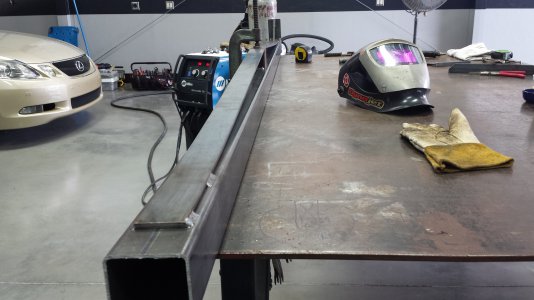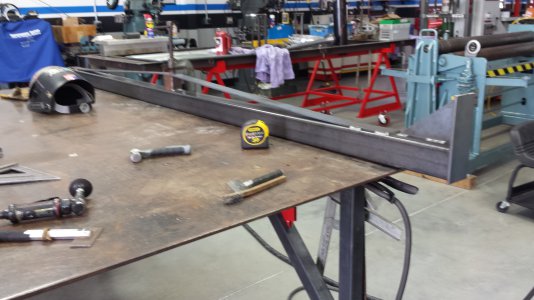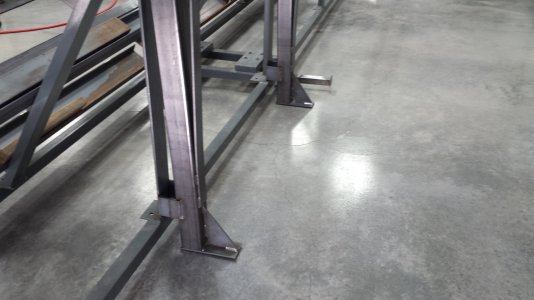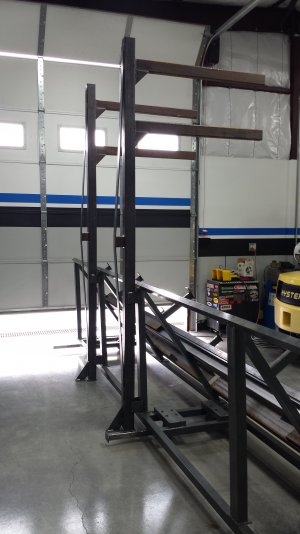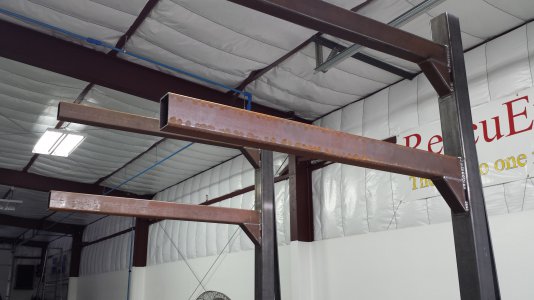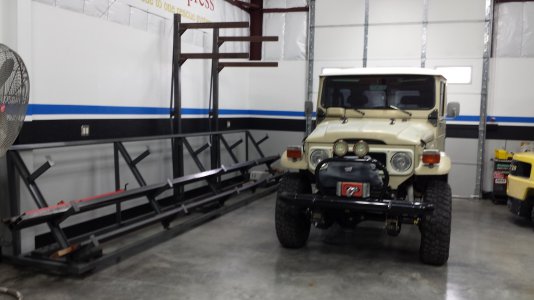My premier welding project has to be a boat trailer built from the ground up in the 1980's. It was designed to carry an 18' Great Lakes fishing boat. It features a 6" dropped axle, hydraulic Surge disc brakes with an automatic bypass valve for reversing. a combination of roller and bunks for support, and a streamlined frame.
The dropped axle was made using salvaged Pontiac spindles (the wheels were the same as my S10 of the time, eliminating the need for a separate spare). An adapter plate was made for each wheel assembly and welded as well as bolted to the assembly. Alignment prior to weld-up was done using a then new digital level. Leaf spring suspension was used.
A combination of roller support and bunk support was used in the design. Rollers were implemented under the keel to facilitate loading and unloading the boat. The rear rollers are mounted on a pivoting mechanism, controlled by a separate winch, to drop out of the way and transfer the load to the bunks. To permit the use of the dropped axle, a removable cross bar, held in place by pins, was used. The over width clearance lights were mounted to this bar as well. Fenders were purchased from Northern Tool. Re-enforcing diamond plate decks were welded aft of the wheels.
The frame was designed on quadrille ruled paper (no CAD back then) and the curve plotted out with offsets from a reference line every foot or so. These curves were then chalked on the shop floor using a thin strip of flat bar as a French curve. The major build occurred at the welding shop of a close friend and fishing buddy. The main frame was built from 3" structural channel. We would make a bend in the channel and evaluate it on the layout pattern, tweaking when necessary. Once one side was done, we used it as the pattern for making the opposite side. 4" x 1/4" square tube was used for the tongue.
A weekend of work was sufficient to get the trailer to the point where I could tow it home. At home, I welded 3/16 x 3" flat to the 3" channel to create a box. Cross pieces were also boxed in. All joints were then completely welded and ground smooth. 7018 rod was used for the first pass and 7014 for a finish pass. My buddy also had a Diesel engine driven sandblaster and four 55 gallon drums of sand and an afternoon later I had a completely bare metal frame. The frame was primed and painted with a custom mixed implement paint to match the boat trim.
The overall project was a success. Doing it over, I wouldn't have gone with the six inch drop. The back end can bottom out going in and out of driveways. A four inch drop would have been sufficient. I compensated somewhat by modifying the spring shackles. Going to a larger tire would help as well. With the Surge disk brakes and low slung profile, it pulls like a dream. No wind resistance nor any push from the trailer when braking. Even behind my old S10, you could easily forget that it was there.
I apologize for the less than ideal picture quality. They are retakes from old pre-digital photos. The two close-ups show the Surge brake system. The bypass valve is a surplus jet engine fuel valve with a rating of 1500 psi. It is a 24 volt valve but, since the valve is never energized under load, it functions well at 12 volts. It is tied into the vehicle backup lights so the hydraulic system is disabled whenever backing the trailer.
The boat and trailer are in dry dock now, awaiting a transom rebuild (replacing the old rotted wood core with a new fiberglassed laminate and raising the transom from 15" to 25" to accommodate a new four stroke engine and anticipated waves on the Great Lakes.
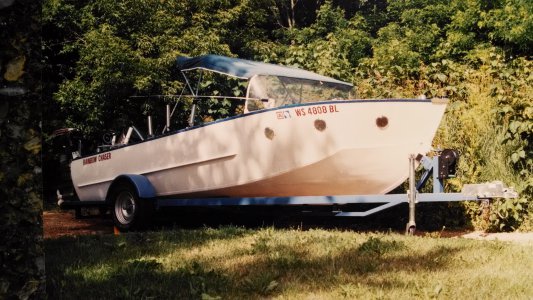
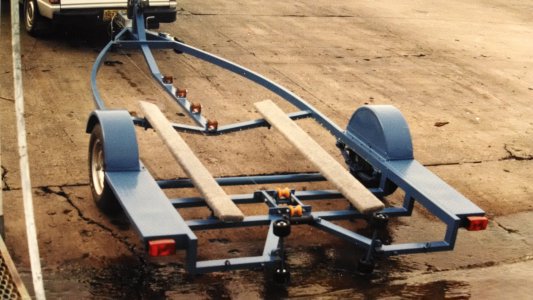
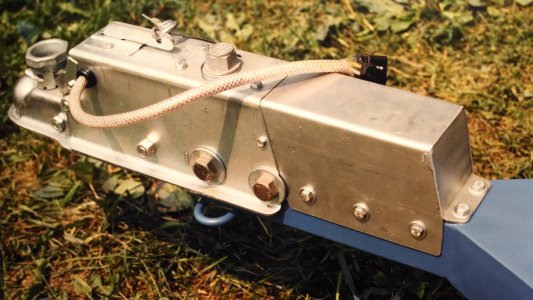 View attachment 98442
View attachment 98442
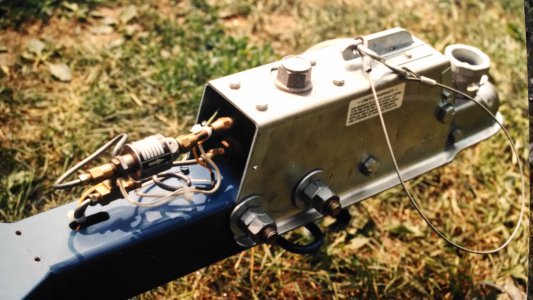


 View attachment 98442
View attachment 98442
